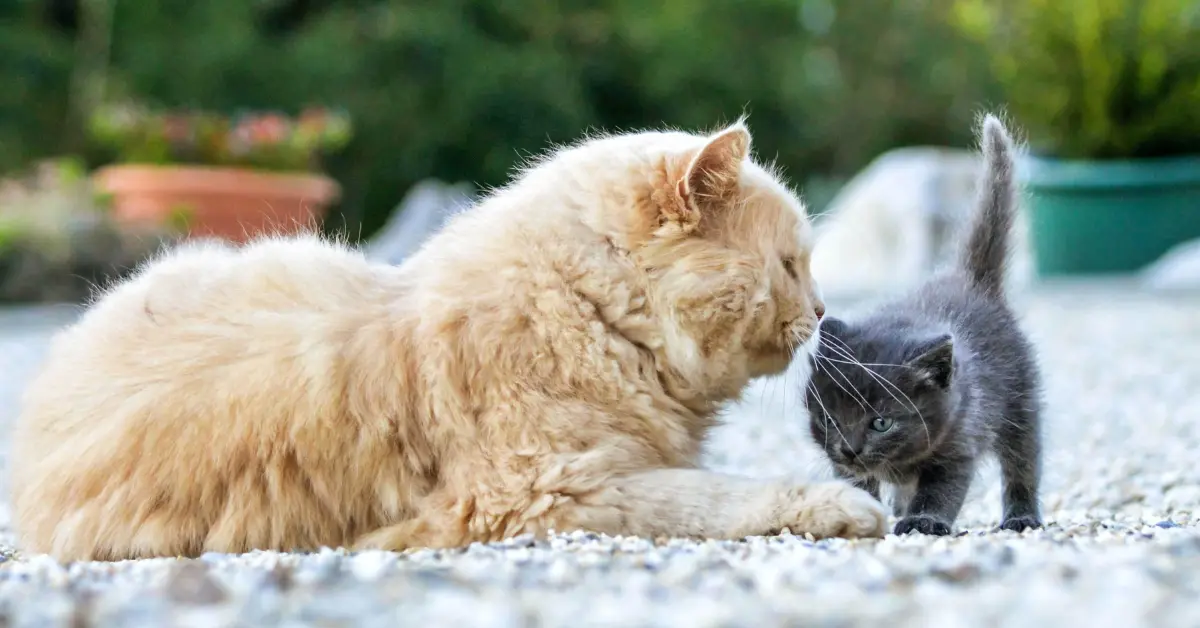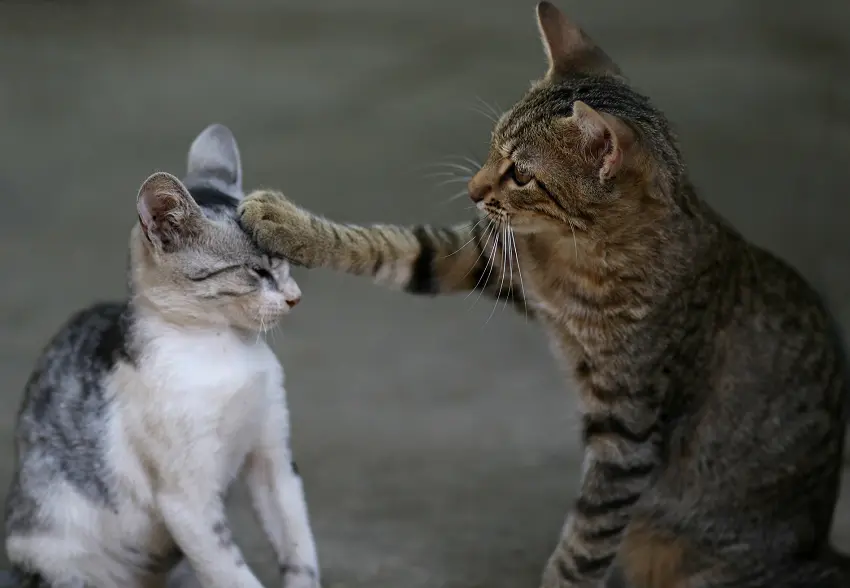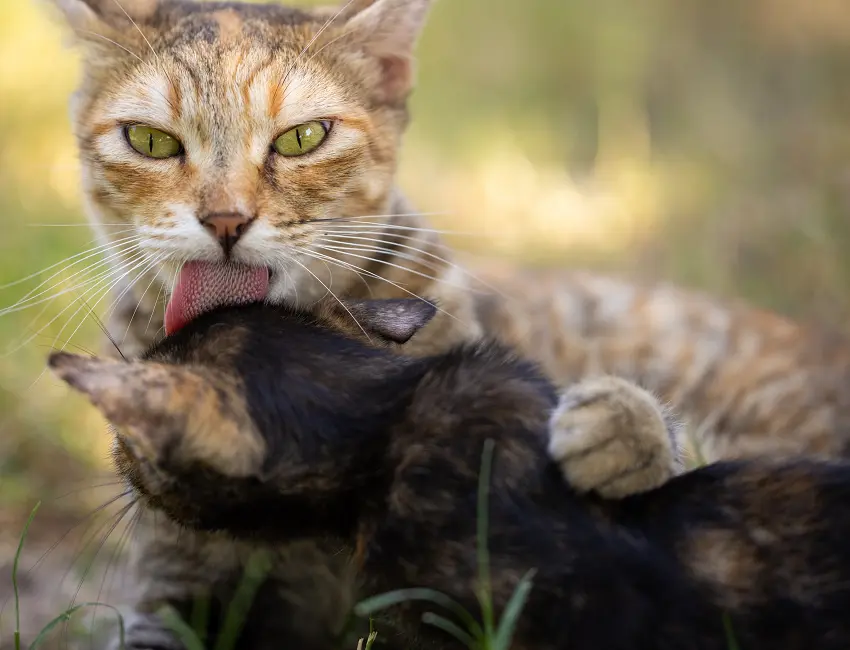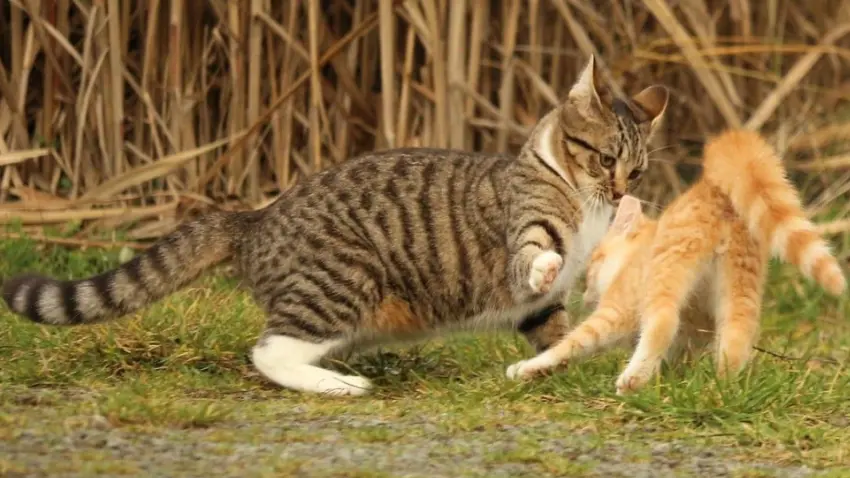How To Introduce A Kitten To An Older Cat
Are you planning to get a new kitty to join your older feline? Knowing how to introduce a kitten to an older cat is essential, so the two will go along together. You have to go slow and ensure that the two felines have matching personalities. Keeping your older cat calm and creating a safe space is the first step in introducing the new kitty at home. Also, you must encourage a positive interaction to prevent any territorial issues and aggression.
Do you want to know more? Below, I discussed these tips in length so you can try it at home:

Before you bring home the kitten…
Before you choose a kitten to join your older cat, make sure that its personality will match with the former. Cats are territorial and solitary beings, so they won’t easily accept the presence of another feline. Ask yourself, what is my older cat like?
Ideally, you’d want a small kitten breed and of the opposite gender. Most importantly, it should share the same energy level as your resident cat. Otherwise, your older and laidback feline will find an energetic kitty annoying.
Also, it would be best if you got a kitten with a gender opposite your resident cat. Two male cats don’t mix easily because they will keep on outsmarting each other in terms of territory. If you’re keen to get a kitten of the same gender, your older cat must be an adult. Please read here: Is It Safe To Allow Male Cats Around Newborn Kittens
Introducing a new kitten to an older cat
Bringing home a new kitten is exciting, but you have to introduce it properly to your older cat. This task can be tricky, depending on your resident feline’s personality and social skills. For a good start, I recommend the following tips:

-
Keep them separated for a while
You’re probably excited to show your older cat the new kitten, but hold up! In the meantime, keep the two felines separate. This is to let the kitten adjust to its new home. Arriving at a new house is stressful enough, what more seeing and smelling a large cat at once. That’s too much stress for a small kitty.
I recommend keeping the kitten in a separate room that your older cat won’t access. This way, the kitten will attach its smell inside, which is useful for the succeeding steps.
Make sure that the room is complete with a cat bed, kitten pacifier, food and water bowls, toys, and other supplies. It doesn’t have to be too lavish; get the essentials covered.
-
Let them sniff
The next step is to introduce the new kitten through the sense of smell. As you know, cats recognize other cats (and humans) through each one’s unique scent. This is also true if you are going to introduce a new kitten to your older cat.
Get one of your kitten’s toys, ensuring that its smell has attached to it. Next, leave it lying around the house so your older cat can smell it. The goal here is to desensitize the older cat to the scent of the kitten. So when they first meet, your older cat won’t find the kitten threatening.
Do the same on your kitten. Place your older cat’s toy in your kitten’s room so it will be acquainted with the scent. This will prevent stress once the two cats meet.
After that, remove your new kitten from its room and let the older cat enter. Let the resident feline sniff and explore around. Expect the older kitty to act weird on the new scent, but let it be. While your older kitty is acclimating on the kitten’s room, bring the latter to the older feline’s quarters. This will allow both cats to identify each other through smell.
I also recommend giving treats while the two cats are on each other’s rooms. This will help associate the scent to something positive. Do this for a week before proceeding to the next step.
-
Prepare for the first meeting
Once both cats are relaxed on the smell of each other, it’s time to introduce them face-to-face. I suggest doing the first meeting at mealtime so you can leverage food to control the kitties’ response to distractions.
Choose a neutral ground where your older cat doesn’t usually stay. I recommend having someone watching over the older kitten just in case it erupts into a catfight.
Next, place the two cats at a distance and allow them to approach each other at their own pace. Never bring the kitten close to your cat’s face because it will be stressful for both.
Expect that your older cat and the new kitten will hiss at each other. This is normal, but you must prepare a blanket so you can separate the two felines in the event of a fight.
Remember to stay calm and maintain a positive environment by giving each cat their treats. You can also feed both cats together while keeping them separated by sitting in the middle. Over time, your older cat will associate the kitten’s presence with food.
-
Keep encounters short
If your older cat and the new kitten don’t seem to get along on the first meeting, keep their encounter short. Try again in the next days and see if your older cat’s response will improve.
Your older cat may still hiss and swat on the kitten, but this is still normal as the former is establishing its position in the cat hierarchy. As long as the older kitty isn’t making any harmful gestures, it would be best if you let it teach the kitten its boundaries.
It may take a while before an older cat accepts a new kitten. Still, don’t give up on the first weeks. Rushing the socialization of the two will only result in further aggression.
-
Don’t run favorites!
When introducing a new kitten to an older cat, never run favorites. Treat each one equally so your older kitty won’t grow jealous of the newcomer. Sometimes, it also works to favor the resident cat so it will associate the kittens’ presence to something positive.
How long does it take for cats to get along?

There’s no single formula to answer this because it depends on the cats’ personalities. You’re lucky if the older cat accepts the kitten right away. But if not, you must give the older feline some time to adjust.
It takes about 8 to 12 months for cats to form a strong bond with each other. While others will become best buddies right off the bat, others need some time to get used to the fact that they are no longer the solo kitty at home.
You should be gentle and allow the two cats to know each other on their terms. Encourage bonding time, but always keep an eye so you can break catfights.
Why do two female cats not get along?

One of the unwritten rules of multi-cat households is getting a second cat opposite the gender of your resident feline. Two unrelated female cats will often butt heads, especially if they are almost of the same age. It would be a competition between territory, an intact male, and your affection, among other things.
If your two female kitties don’t seem to get along after a year, consider having them spayed. This will tame sexual overdrive that triggers catfights.
Also, you have to consider the individual personalities of your cats. If you have a laidback cat like an American Shorthair, it would be wise to get a kitten with the same energy level.
Conclusion
Knowing how to introduce a kitten to an older cat is key to a harmonious relationship. Go slow and let the two adjust to the presence of each other. Some cats accept kittens fast, while others require more time. Remember that each cat is different, so you shouldn’t rush them on being around the kitten. In the end, forcing the two cats together will only result in more problems.
